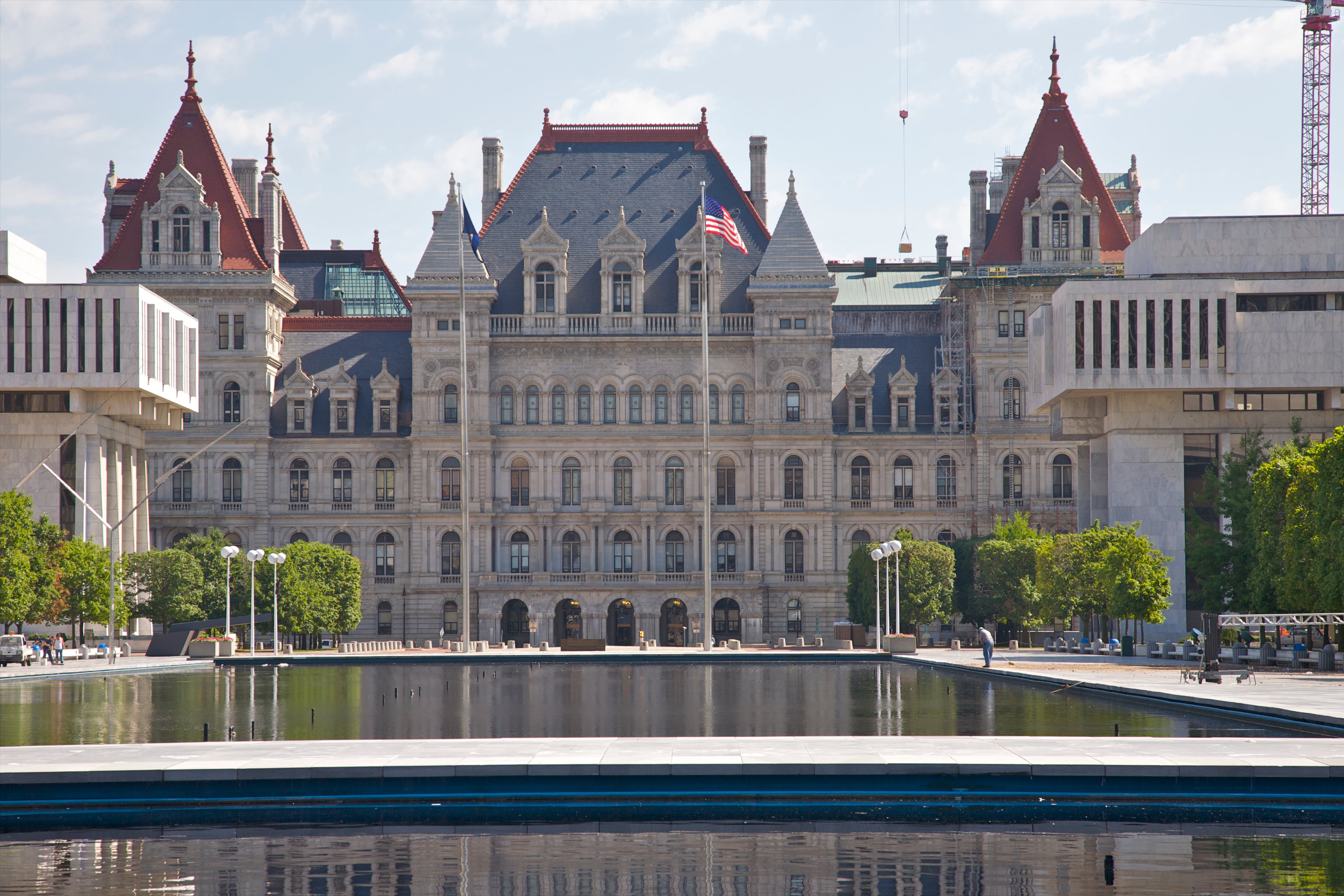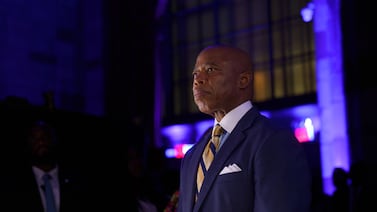Sign up for Chalkbeat New York’s free daily newsletter to get essential news about NYC’s public schools delivered to your inbox.
New York’s school funding formula relies on outdated information and “reflects an antiquated concept of what public school districts are expected to do.”
That’s according to a more than 300-page report released this week by the Rockefeller Institute of Government, a public policy think tank based at SUNY. As part of the April budget agreement between Albany lawmakers and Gov. Kathy Hochul, the state charged the organization with issuing a set of recommendations to revise Foundation Aid, the formula that sends roughly $24.9 billion to school districts — including more than $9.5 billion to New York City schools.
First implemented in 2007, Foundation Aid uses decades-old data to calculate district needs, like relying on figures from the 2000 Census to measure student poverty. Other factors that impact district spending, including the number of students living in temporary housing, don’t weigh into the current formula at all. (Foundation Aid only received full funding from the state in recent years — following a lengthy fight from education advocates.)
Though the institute’s recommendations are not binding, its proposals could influence debates over how to update the formula when lawmakers return to Albany in January.
State Sen. Shelley Mayer, a Democrat who chairs the senate’s education committee, stressed that “any determinations about how to change the formula will rest with the Legislature and Governor.”
“The Rockefeller Institute’s report offers a set of recommendations –– some good, some concerning –– to begin a robust conversation about how to fix the Foundation Aid Formula,” Mayer said in a Tuesday statement. “Further, we are not limited by what is proposed in the Rockefeller Institute’s report.”
Read the Rockefeller Institute’s report here.
Recommendations: School funding formula needs ‘significant change’
In its report, the Rockefeller Institute called for “significant change” to the formula. Schools today provide far more services than when the formula was initially created, the organization noted, pointing to mental health support at school, language instruction for English learners, and a growing reliance on schools as a “community hub.”
The recommendations include modifying how the formula accounts for inflation, changing and updating the data used to determine student poverty, and establishing more nuanced calculations for funding based on students with disabilities, among other changes.
One of its suggestions is already getting pushback from some lawmakers and the governor: phasing out 50% of “save harmless,” or “hold harmless,” a policy that shields districts with declining enrollment from losing funding.
During the last budget cycle, Hochul sought to effectively end that provision, but the proposal was rebuffed by state lawmakers.
In a statement on Tuesday, a spokesperson for Hochul’s office distanced the governor from the Institute’s proposal to phase out the policy.
“As we craft the upcoming Executive Budget, the Governor believes we should avoid proposals that would negatively impact school budgets, such as eliminating the hold-harmless provision of the Foundation Aid formula,” the spokesperson said.
Reactions: Formula needs overhaul, not tweaks, some argue
Some observers worry that the institute’s proposals don’t go far enough to overhaul the formula, and fail to account for major issues impacting New York City schools.
Michael Rebell, executive director of the Center for Educational Equity at Columbia University’s Teachers College and the lawyer who led the landmark case against the state that paved the way for Foundation Aid, argues it isn’t enough to change aspects of the formula. He believes the state’s current approach falls short of its constitutional mandate to provide a “sound basic education.”
“We need a process that takes a totally new look at what students need in 2024 and 2025, not tweaking and patching up something that was written in 2006,” he said. “If you’re not looking at the overall impact of whether kids in every district are getting a fair shot — are getting the opportunity for sound basic education — what have you accomplished?”
Some advocates expressed mixed feelings about the report, noting it did not address several key concerns in New York City, including schools’ needs to help students in temporary housing. In New York City the number of students experiencing homelessness grew to more than 146,000 last school year.
“We are disappointed that there are no recommendations to add weights for students experiencing homelessness and students in foster care so that schools can better meet their needs; to provide per pupil funding for 3-K and pre-K students; or to help NYC meet the new class size limits required by state law,” said Kim Sweet, executive director of Advocates for Children, in a statement.
State Sen. John Liu, a Queens Democrat who chairs the Senate’s New York City education committee, echoed concerns about the report’s exclusion of the city’s class size reduction mandate.
“This absolutely must be considered to provide our school kids a constitutionally required, sound, basic education,” he said in a statement.
Impacts: How proposals could affect NYC schools remains unclear
It’s difficult to determine how the report’s proposals might impact students in a particular school district, because they cannot be considered in isolation from one another, Rebell said.
For example, a recommendation that the formula stop using federal free- and reduced-price lunch eligibility as a basis for measuring student poverty might result in less funding for New York City schools, he said. At the same time, a proposal to update how the formula accounts for differing costs between regions could mean more state funding for the city’s students.
And with the state under no obligation to adopt any or all of the Rockefeller Institute’s recommendations, it remains unclear what the report might mean for students.
“I can look at aspects of this formula and say, ‘This would help New York City. That would hurt New York City,’ but that’s not the way to do it,” Rebell said. “The way to do it is: What do kids in New York City need? What do kids in these rural districts need? How can we put together a package that’s responsive to all of it?”
The city’s Education Department and teachers union were both reviewing the report.
“We are continuing to review the report and the impacts of its proposals, and look forward to working with the Governor and the legislature moving forward,” Education Department spokesperson Jenna Lyle said in a statement.
Michael Mulgrew, president of the United Federation of Teachers, said, “Some ideas sound promising. Others are cause for concern.”
He was focused, he said, “on what changes need to take place if we are to better support our city’s students, educators, and school communities.”
Looking ahead: Formula need regular updates, report says
Regardless of how state officials choose to update Foundation Aid, the Rockefeller Institute noted more regular revisions to the school funding formula are critical. The report noted student populations and needs, state learning standards, and other measures of academic achievement are all subject to change each year.
“Assuming state policymakers enact some of the recommendations quickly, they should not wait another 17 years to examine the Foundation Aid formula for additional needed revision,” the report said. “An essential part of this reform effort should be a commitment to revisit the Foundation Aid formula every three to five years.”
Julian Shen-Berro is a reporter covering New York City. Contact him at jshen-berro@chalkbeat.org.






